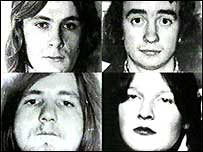 Where the American film industry’s interest in the IRA and The Troubles was generally commercial, the use of the IRA in Irish film took a different route. The year before Ronin — the American action thriller directed by John Frankenheimer and starring Robert De Niro — hit the big screen, Jim Sheridan’s second film about The Troubles was released to critical acclaim.
Where the American film industry’s interest in the IRA and The Troubles was generally commercial, the use of the IRA in Irish film took a different route. The year before Ronin — the American action thriller directed by John Frankenheimer and starring Robert De Niro — hit the big screen, Jim Sheridan’s second film about The Troubles was released to critical acclaim.
The Boxer, starring Daniel Day-Lewis, came as a follow-up to the very successful In the Name of the Father, released in 1993. Both films feature immediate differences from the American action films that had starred the IRA over the years. Both films are dramas, centering on themes of justice, innocence, redemption, and the presence of two crippling forces in the daily life of the Northern Irish people: the IRA and the British Army.
In the Name of the Father is based on the story of the Guildford Four, the four people wrongly imprisoned for carrying out the

Guildford bombing and was adapted from the autobiography of Gerry Conlon, who served 14 years in British prison after being wrongly convicted of carrying out the bombing. The story of the Guildford Four and the Maguire Seven had captivated Irish and British audiences in the early 1990’s, as their appeals were brought to court and their convictions ultimately overturned. Already a polarizing topic, the cases were made all the more controversial by allegations of extensive torture on the part of the British justice system in response to the bombings. Upon its release, British media bombarded the film, with the Mail on Sunday warning it would be a “cash bonanza” for the IRA when it reached Irish American audiences. While this criticism of the film was unfounded, funding was a major concern when talking about the IRA and their prospective American audience.
Both films mark a departure from the purely symbolic use of the IRA in films such as Ronin and shows like Hawaii Five-O. Created by an Irish Director and filmed in Ireland, the films explore a much more subtle understanding of the IRA, specifically as it impacted daily life for the people of Northern Ireland. In these films, the IRA’s role as vigilante police forces in Catholic working class communities in Belfast and Derry are exposed, as are their presence on the streets.
The Boxer reveals the unpleasant underbelly of the IRA as an organization that had no place in popular American film. It tells the story of once-promising boxer Danny Flynn’s release from prison after fourteen years in jail. As he begins to work towards peace via his non-sectarian boxing club, it becomes clear that a now fragmented IRA has elements not willing to take part in the peace process. His former boxing coach, Ike, had fallen into alcoholism after Danny’s arrest and having seen many of his young boxers, Catholic and Protestant, killed in the violence. This is one such example of the IRA that never made it into popular film. The “not the IRA” construction allowed mainstream American filmmakers to deny the terrorist realities of the IRA. Here, though, in Irish film, such denials are not acceptable.
[Home]

One Reply to “Irish Film and Sincere Portrayals”